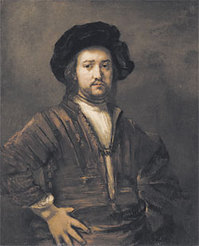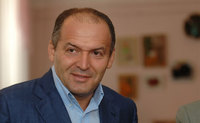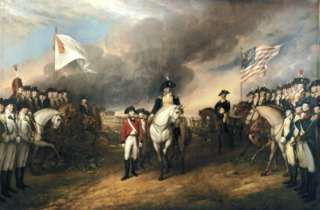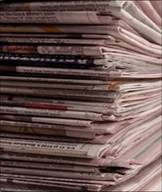 Back in September, I wondered here whether the prices for Old Master works, vs. those by many contemporary artists, were seriously out-of-whack. The occasion was an estimate set by Sotheby’s for a rare self-portrait of Antony van Dyck — a seemingly low £2-3 million, or less than $5 million.
Back in September, I wondered here whether the prices for Old Master works, vs. those by many contemporary artists, were seriously out-of-whack. The occasion was an estimate set by Sotheby’s for a rare self-portrait of Antony van Dyck — a seemingly low £2-3 million, or less than $5 million.
That sale takes place tomorrow.
But tonight came word from London that Christie’s had completed an auction of Old Masters that set the record for the highest total in that category — $112.4 million — despite the fact that only 65% of the works in the sale were sold. The previous record sale was $110.2 million in 2007.
On the other hand, this sale included 19th Century works as well as Old Masters, so it’s not directly comparable.
Equally interesting, though, the sale posted a world record at auction for any work on paper — $47.9 million for Head of A Muse, a drawing by Raphael (above), which is also the second highest total at auction for any Old Master work, painting or drawing. (The record is $77.2 million for Rubens’s The Massacre of the Innocents, set in 2002.)
any work on paper — $47.9 million for Head of A Muse, a drawing by Raphael (above), which is also the second highest total at auction for any Old Master work, painting or drawing. (The record is $77.2 million for Rubens’s The Massacre of the Innocents, set in 2002.)
And it set a world record at auction for a Rembrandt — $33.2 million for Portrait of A Man With Arms Akimbo (right). The previous record was nearly $28.7 million, paid by Rose Marie and Eijk van Otterloo, whom I profiled here.
Maybe the market is righting itself…tastes are adjusting. Of, it may be that the market is simply back with strength.
BTW, Christie’s said 46% of the buyers were European vs. 43% American, and 11% from Asia and the Middle east.
Photos: Courtesy Christie’s


 Much work remains to be done, like getting a completely new design. But ARC is busy proving that it’s needed: last Friday, it released the results of a survey of adult Americans, which had asked 27 multiple choice questions about the revolutionary period. We flunked, posting an average score of 44%.
Much work remains to be done, like getting a completely new design. But ARC is busy proving that it’s needed: last Friday, it released the results of a survey of adult Americans, which had asked 27 multiple choice questions about the revolutionary period. We flunked, posting an average score of 44%.  Now Norman Lebrecht’s piece on
Now Norman Lebrecht’s piece on 
![[HD] Zaha HADID - (2009) - MAXXI Museum Art XXI (Roma - Italy)](http://i.ytimg.com/vi/qLMMmJzDvR8/hqdefault.jpg)